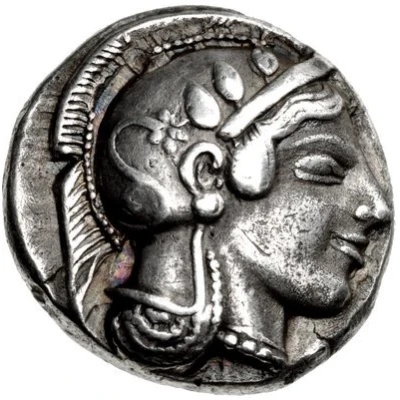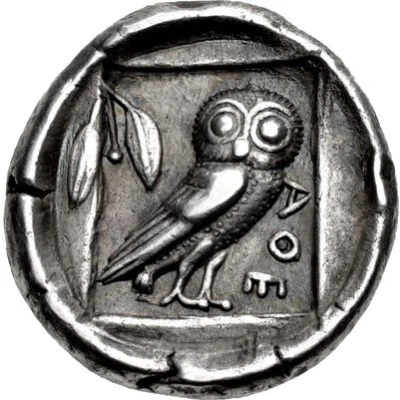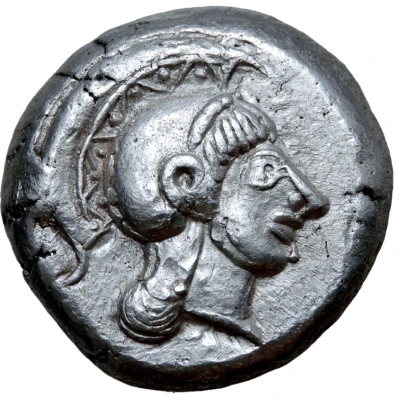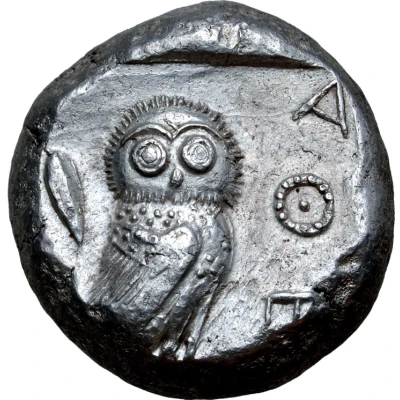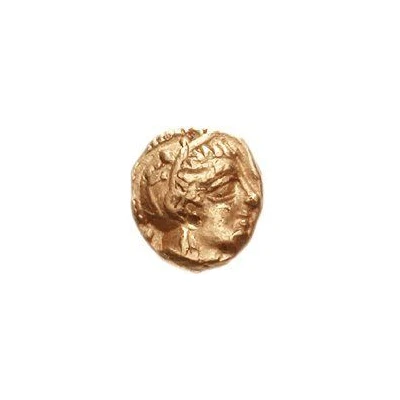
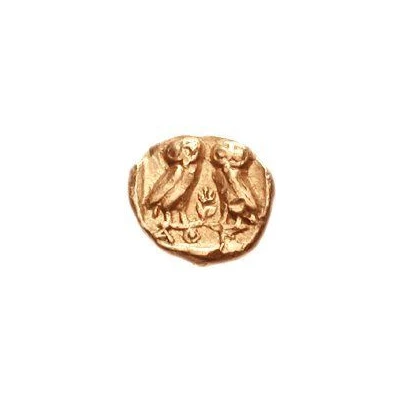

© Classical Numismatic Group, Inc.
Gold Diobol 407 BC - 406 BC
| Gold | 1.43 g | - |
| Issuer | Athens (Attica) |
|---|---|
| Type | Standard circulation coin |
| Years | 407 BC - 406 BC |
| Value | Gold Diobol (10⁄3) |
| Currency | Drachm |
| Composition | Gold |
| Weight | 1.43 g |
| Shape | Round (irregular) |
| Technique | Hammered, Incuse |
| Orientation | Variable alignment ↺ |
| Demonetized | Yes |
| Updated | 2024-10-09 |
| Numista | N#369759 |
|---|---|
| Rarity index | 100% |
Reverse
Two owls standing confronted; olive branch between.
Script: Greek
Lettering: AΘE
Translation: Athens
Comment
Based upon the coins that have survived, we can be sure that five denominations of ‘emergency’ gold coins were struck, the largest being the didrachm (stater) of about 8.6 grams and the smallest being the obol of about 0.72 grams. An account of the treasurers of Athens entered sometime after 385/4 B.C. (Inscriptiones Graecae II, 1414, lines 6-7) records the receipt of two gold hemiobols, suggesting that a sixth denomination was issued, though no hemiobols survive. These coins, presumably, would have been 1/24th staters weighing about 0.36 grams. Another Athenian treasurer’s report (IG II, 1408, lines 11-13) provides an even more fascinating detail, namely that when the record was made, sometime after 385/4 B.C., “the dies and the little anvils on which they used to strike the gold coins” were still contained in a wooden box with the public seal.copied from: https://www.acsearch.info/search.html?id=1390166
Interesting fact
The Gold Diobol coin from Athens (Attica) was used as a means of payment during the time of Pericles, a prominent statesman and military leader in ancient Greece. It was during his leadership that Athens experienced a period of cultural and economic prosperity, and the production of coins like the Gold Diobol helped to facilitate trade and commerce.
